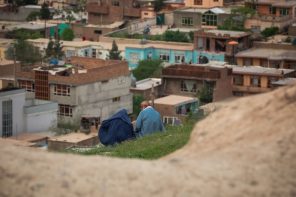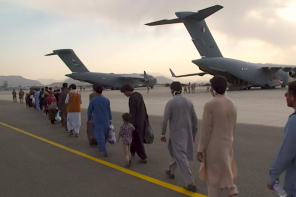In the wake of the Boston Bombings, Eboo Patel, public intellectual and director of the Interfaith Youth Core (IFYC), has proposed, in a recent article on HuffPo, that this explosive violence resulted partly from a failure of interfaith dialogue.
With the caveat that “interfaith programs are not a miracle solution,” he offers three ways that this work can help:
First, “interfaith helps harmonize people’s identities.” Patel goes on:
“In America, just about everyone is some sort of hyphenated hybrid of race, religion and ethnicity/nationality… Religious extremists try to separate people’s various identities and pit them against each other.”
Patel suggests that the Tsarnaev brothers might have been less vulnerable to extremism if they “had been involved in discussions with people from other backgrounds about how their faith identity was mutually enriching with their nationality and citizenship.”
Second, Patel notes that “interfaith efforts” will discourage Americans from casting blanket suspicions on Muslims. “Interfaith efforts,” he writes, “help us to separate the worst elements of communities from the rest.”
Third, in general, “interfaith efforts remind us America is about welcoming the contributions of all communities and nurturing cooperation between them.”
Such assertions make sense. For many people—especially those who are not white Christians—joining a liberal interfaith organization might be a matter of survival in light of a “War on Terror” that has made primary targets out of black and brown bodies. This is especially true when we consider widespread abuse directed at people profiled as Muslim or Arab—a response that began before the second bomb had even exploded.
But I think we should be cautious about attempts to frame the Boston bombings, or for that matter any profound act of violence, mainly as a failure of (or an injunction toward) “interfaith cooperation.” There are four questions worth raising:
1. What other dynamics of power move out of focus when celebrations of “interfaith cooperation” are brought to the fore?
Interfaith programs are premised on the assumption (popularized by the Interfaith Youth Core but also rooted in the work of scholars like Diana Eck and Stephen Prothero) that “increased religious diversity is causing increasing religious conflict.” Revising a W.E.B. Dubois quote, Patel often claims that the “faith line” has replaced “the color line” as the “major problem of the 21st century.” For Patel, “the faith line” separates not religious traditions but rather “extremists” from “pluralists.”
As Patel wrote in a 2009 Washington Post column during the “Ground Zero Mosque” controversy, “WE, the forces of civilization and freedom, must defeat THEM the forces of darkness and extremism.”
Part of this logic is to locate individual “identities” as catalysts for conflict. Appeals to “interfaith” often prioritize projects for recognition of such identities over attention to systemic forms of material and social inequality. Nobody doubts that relationship-building is a central part of any justice project, but such efforts should not lead us to look away from racialized, historically situated struggles over resources, territory, and power.
Examples abound: the annual deluge of “interfaith prayer services” each Thanksgiving; assertions that violence in Israel/Palestine is mainly a theological misunderstanding between Jews and Muslims; IFYC advising its campus chapters to avoid “divisive social issues” and “hot-button political topics” that may undermine an “inclusive atmosphere.”
And focusing on “interfaith” in the case of Boston might leave out of focus the complex, messy, harder-to-romanticize factors of this case. Immigration. Race. State surveillance. Access to emotional and economic support. Police presence in local neighborhoods. Teenage psychology. International relations in the War on Terror. Access to weapons.
In their attempts to reach a larger base, mainstream interfaith projects sometimes gloss over material conflicts and replace them with driving oppositional formulations between “interfaith” participants and those who refuse to participate out of their own intolerance.
As with Patel’s Boston Marathon article, participants in the interfaith dialogue generally are constructed as always-already on the side of “good.”
And this brings us to a second question…
2. Does this appeal to “interfaith” trade in binaries?
Second, appeals to interfaith dialogue often trade in binaries, just like the discourses that they seek to resist. Instead of “Christians” versus “everyone else,” or “Americans” versus “Muslims,” we have a new formulation that pits “extremists” against “pluralists.”
But what makes this binary better than the others?
We all remember George W. Bush’s post-9/11 declaration that “you are either with us or you are with the terrorists,” followed by repeated injunctions that the “War on Terror” was not a “war against Islam.” Such statements continue to foreground sustained arguments in favor of ongoing military campaigns in Iraq, Afghanistan, and Pakistan; domestic spying programs; and the adoption of policies like the one that recently invoked to deny Dzhokhar Tsarnaev a reading of his Miranda Rights.
Binary formulations, regardless of content, erase complexity. When we cast the Tsarnaev brothers as “the worst elements of our communities” who should be “separated from the rest,” we have desensitized ourselves to the complexity of human lives that may intersect with “ours,” to the point of dehumanization. Such oppositions were at work when some Boston communities reacted to Dzhokar’s capture with cheering, toasts, and flag-waving.
Of course we feel relief that this chapter of a harrowing chain of events is over, and we should commend all of the people who worked for a resolution. At the same time, we might also interrogate what made so many of us follow, and then celebrate, this event as if it were a sporting contest. We could consider the fact that this nineteen-year-old—whose situation we do not know—is destined for death by execution.
And this raises a third question…
3. Is this interfaith project also an implicit nation-building project, and do I support it?
Many scholars have noted how a nationalized brand of “interfaith harmony” provided a foil to German “fascism” during World War II and Soviet “Communism” during the Cold War. In the 1930s and early 1940s, the National Council of Christians and Jews used their interfaith base to galvanize American publics against Nazism. By the 1950s, mainstream interfaith discourse increasingly positioned the freedom of individual conscience against “totalitarian” and “godless” Communists.
Such projects foreground contemporary claims about pluralism and interfaith cooperation in US civic life. In 1997 Diana Eck argued that the United States is “the most religiously diverse nation on earth.” She lauded “E pluribus unum” as an appropriate US ideal, where the unum is “not religious” but instead “civic—a oneness of commitment to the common covenants of our citizenship” that enables pluralism. More recently, Patel—who cites Eck as IFYC’s main inspiration—has described the U.S. as “sacred ground” for a pluralist ethic, and he directly claims “tolerance… as part of American exceptionalism.”
And surely there is wisdom in insisting that the U.S. live up to its highest ideals of democracy. But we must keep in mind that, especially since 9/11, interfaith discourses have found new life within arguments on behalf of the many security and military policies that have accompanied the “War on Terror.” For example, in the same month that Bush invaded Afghanistan, he instituted an annual Presidential Iftar dinner, using the platform to distinguish between “faithful” Muslims from “killers… [who] follow an ideology very different from Islam.”
Or, in a 2010 speech at the Muslim Advocates’ Annual Dinner, Attorney General Eric Holder encouraged his audience to “unite law enforcement and Muslim communities,” especially with respect to expanding Homeland Security surveillance regimes: “There can be no ‘us’ or ‘them’ among Americans,” he asserted, “Together, I am sure that we can build a future that honors America’s enduring creed—E pluribus unum.”
Or, consider how after US newspapers reported that the military gave Osama bin Laden an “Islamic burial,” some interfaith responded by celebrating the moral resolve and pluralist ethic that inspires the US military to “treat even its worst enemy with utmost dignity”—never mind the years of torture, extrajudicial killing, and wars that provided background context.
Such claims are premised on realizing the promise of a liberal national community that places pluralism and religious freedom at its center. But often this logic becomes rationale for interventions against constructed as lacking the same value. Appeals to “interfaith” walk a tricky tightrope, especially if they want to build communities of solidarity without reifying exceptionalist claims.
This is especially the case in the aftermath of the Boston attacks, when the climate is ripe not only for anti-Muslim violence but also for erosions of civil liberties in response to new threats.
Which brings us to the fourth question…
4. What is the goal of this appeal to interfaith cooperation? Do I support it?
Our discourses do not come with ready-made meanings. Thus appeals to “interfaith tolerance” are not, and never have been, goods in themselves; “interfaith” programs always provide means to other ends, whether or not those ends are explicit or even known.
Many scholars have shown how twin rhetorics of “tolerance” and “pluralism” back a range projects—noble, benign, and horrifying. Kelly Baker has written eloquently about how Ku Klux Klan members constructed themselves as acting out of “tolerance” and “love.” Meanwhile, we see organizations like Interfaith Worker Justice using the cultural capital of the term “interfaith” to fight for a living wage and union rights. Not to mention nation-building projects we already discussed.
Clearly, we cannot draw one “conclusion” about what “interfaith” discourses “do.”
What we can do, however, is think critically about how they resonate contextually.
If we don’t, we may find that we’ve become unwitting participants in discourses that undergird the systemic violence that continues to structure our world—and this is not necessarily the violence of those deemed “extremist” in the mass media. At least recently, mainstream appeals to “interfaith cooperation” often have functioned to excuse an exceptionalist ideology that deepens ruts in a two-tiered legal system and sanctions US military presence abroad.
But if we do critically engage contemporary interfaith rhetoric, we will have accessed—and maybe even begun to influence and redirect—a powerful rhetorical tool for animating transformative social and political action.
For better or for worse, interfaith discourse holds enormous potential. We should approach it with care.




